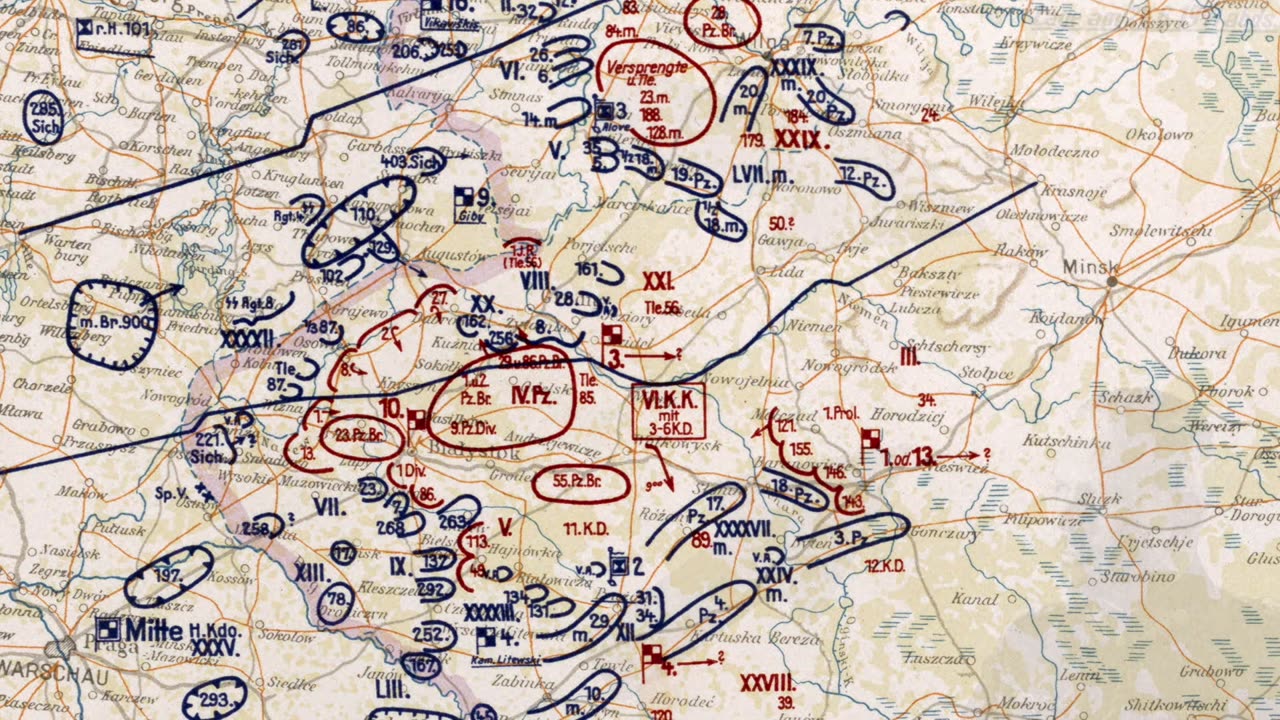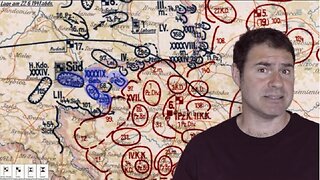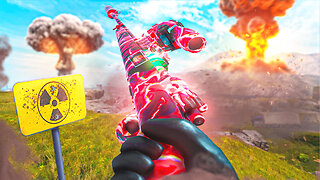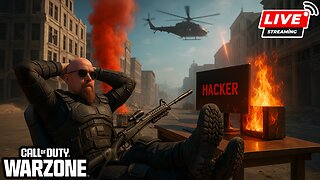Premium Only Content

12th Panzer Division Nr 3 - 3rd Panzer Group - Hermann Hoth - von Brauchitsch - Heinz Guderian
SUPPORT THE CHANNEL
www.Patreon.com/Military1945
COME AND SEE
During those first days the Panzer Groups panzer division sliced through the Soviet lines, the only thing that seemed to slow them down much was their own logistical problems and the primitive Russian road network.
The original plan had envisioned massive battles of annihilation taking place in the border region that would lead to a quick end to the war. If the Soviets were allowed to successfully retreat to the East they might could allow them to regroup and organize an effective defense. Although things had gone well during the first few days of the attack, In the German High Command there was a lack of consensus regarding to how to proceed. And the decisions made would have a material effect the outcome of the war.
Here we see Major General Josef Harpe, the commander of the 12th PzD, getting out of his command vehicle at a field HQ during the first few days of Barbarossa. With the surprise attack, in close cooperation with the 18th (mot.) ID, the 12th was ordered to penetrate a vulnerable area between two Soviet Army groupings.
Here we can see an original German High Command document which designates the different Corps and divisions to the 3. Panzer Group for the Russian campaign. This HH logo, stands for Hermann Hoth, the groups commander can often be seen on vehicles from the 3rd. This document was probably produced in early 1942 because that’s when the name of the formation was changed from the 3. PzG to the 3. Pz-Army
On page 8 of this report we see the actions of the 12. PzD for June 22 of 1941. They were… Vorstoss über die Grenze und über den Njemen bei Merkine.
The 12. PzD was part of the 57 Army Corps. It was equipped with 8 of the light Pz 1s, 32 Pz 2s, 109 of the Czech built Pz 38ts, and 30 of the more modern Pz 4s.
As we talked about in Part 1 in this series, all-in-all June 22 had gone well for PzG 3. The only issues had been the logistical problems which had kept the 19th PzD from advancing and the lack of adequate communications with Luftwaffe units which would have allowed them to take full advantage of their air superiority. The armored spearheads were advancing through Soviet opposition as expected.
On the evening of June 23, Hoth had prepared the order that would continue his Panzer divisions advancing to the east. He was only waiting for the expected confirmation from headquarters to issue them. For the following morning, after quickly taking Vilnius the 20th and 7th PzDs would advance towards Michalischki and the 12th would move on Oschmiana.
For Hoth these prepared orders were simply following the original plan that seemed to be coming together rather nicely. Advancing generally towards Glebokie they were outpacing the Soviet units that were attempting to retreat to the East. But the fact that there were large Soviet formations retreating East was disquieting to von Brauchitsch the Commander-in-Chief of the German Wehrmacht. It had been widely accepted that the Soviet units in the border region would stand and fight to the last man. This was the figurative rotten door that simply needed to be kicked in to bring down the entire house.
Concerned that too many Soviets units might now escape, Von Braukitsch’s decided to spring the trap and ordered the lead panzer divisions of the 3rd Panzer Group, after taking Vilnius, to advance to the South East.
General Hoth tried to have the orders reversed however the decision had been made. At the time it was considered the more conservative course. There was concern that having the armor continue advancing east could result in them getting cut off and lost.
On the other hand, General Guderian who was in charge of Panzer Group 2, believed that their advance East should continue and that they would cause havoc to the Soviet rear by disrupting supply lines. This would cause the Soviet formations positioned farther to the West to wither and die.
As an interesting side note, it was the Soviet commissars that often forced the units to stay and fight which at this stage in the war lead to their complete annihilation. In order to be able to retreat and possibly survive, in some instances these commissars were murdered by their own troops. As much as the Germans hated these commissars, much of what they did was unknowingly helping the German cause.
This is the situational map that shows the positioning of the units on the evening of June 24. The units of the 3rd PzGr. have made quick progress and make up the left pincher of the envelopment maneuver. To the South, Guderian and his 2nd PzGr was also advancing towards Minsk and would be the right pincher.
-
 12:10
12:10
Military1945
5 months ago1st Mountain Division - Edelweiss - 1. Geb. - Brandenburger - Nachtigall - Lviv - Lemberg - OUN-R
214 -
 1:14:57
1:14:57
JULIE GREEN MINISTRIES
2 hours agoRUSSIA IS ABOUT TO RELEASE SOMETHING THAT WILL CRUSH THE ESTABLISHMENT
33.8K113 -
 LIVE
LIVE
GritsGG
47 minutes agoWin Streaking! Coloring Hair @11AM PST~ Most Wins 3435+ 🧠
45 watching -
 LIVE
LIVE
Welcome to the Rebellion Podcast
19 hours agoMonday Funday - WTTR Podcast Live 8/25
306 watching -
 1:21:24
1:21:24
Game On!
15 hours ago $0.02 earnedTom Brady And The Las Vegas Raiders ARE BACK! 2025 NFL Preview!
23.9K1 -
 LIVE
LIVE
The Bubba Army
2 days agoShould RaJa Jackson Be Arrested? - Bubba the Love Sponge® Show | 8/25/25
1,979 watching -
 LIVE
LIVE
FyrBorne
14 hours ago🔴Warzone M&K Sniping: Builds So Strong They Think I'm Hacking
267 watching -
 2:01:48
2:01:48
BEK TV
3 days agoTrent Loos in the Morning - 8/25/2025
19.9K -
 4:23
4:23
Blackstone Griddles
17 hours agoEasy Salmon Dinner on the Blackstone Griddle
36K2 -
 8:10
8:10
WhaddoYouMeme
1 day ago $0.08 earnedChristians, Before You See “Testament”, Watch this!
13.5K5